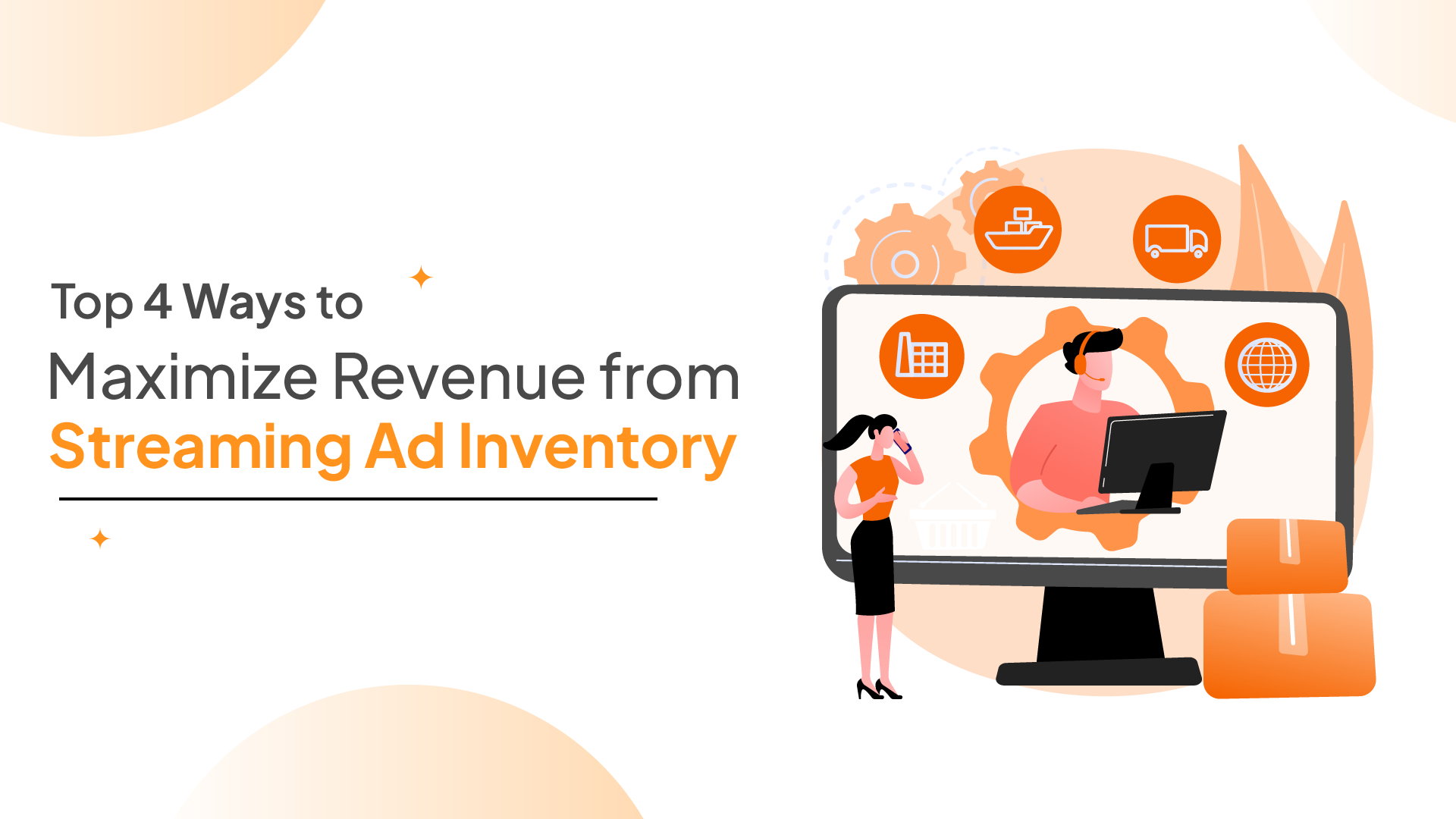

advertising technology
Top 4 Ways to Maximize Revenue from Streaming Ad Inventory
Top 4 Ways to Maximize Revenue from Streaming Ad Inventory
The rise of AVOD and FAST has presented content owners with unlimited opportunities to realize better ROI. While adding more high-quality content to a platform is always a good investment, content owners need more than just an extensive content library to strive in today’s challenging media environment.
An effective monetization strategy can help content owners meet their bottom line faster while delivering an exceptional viewing experience to audiences. Here are the top four ways to deliver personalized ads, increase viewer retention, combat ad exhaustion, and maximize ROI.
1. Hyper-Personalize Ads With Audience Segmentation and SSDAI
Today’s viewers expect to see content and ads that are tailored to their interests or experiences. The precision in delivering targeted content on CTV and mobile devices plays a crucial role in delivering personalized ads, and the first step in this process is identifying the target audience.
Start by grouping viewers into meaningful cohorts based on demographics, behaviors, location, and interests. Then, consider integrating first-party and third-party data to provide a broader and more relevant target audience. This approach ensures that personalized ad playlists are tailored to individual viewing habits and metrics.
Content owners may want to invest in a Server-side Dynamic Ad Insertion (SSDAI) solution, which can seamlessly integrate personalized ads into the video stream and provide a high-quality viewing experience similar to traditional cable TV. In fact, SSDAI technology provides content owners with various intuitive features that enable them to create and manage ad pods effectively, ensuring contextually targeted ads. These include:
- Pod building: Consolidating multiple ads into a single ad break to optimize monetization.
- Content localization: Tailoring ads to regional preferences.
- Per-user playlist (PUP): Generating personalized ad experiences on a large scale.
2. Increase Viewer Retention With Strategic Ad Pod Tactics
Effective ad pod lengths and positioning can likewise result in better impressions and conversions. But even if ads are appropriately personalized, the latency in delivering ads can cause viewers to stop watching altogether. Specifically, streaming services may face challenges in generating higher render rates and win rates for advertisers due to viewer drop-offs during longer ad breaks and simultaneous calls to programmatic partners.
To overcome these challenges, content owners can adopt different ad pod strategies:
- Podsplit: Dividing longer ad pods into shorter ones to improve channel rendering rates.
- Mid-break join: Serving ads to new audiences joining during ad breaks.
- Efficient Ad Tiering: Breaking the pod into multiple-tiered requests to optimize fill rates and ensure demand partners are called when they can win.
3. Combat Ad Exhaustion With Innovative Ad Formats
Repeated advertisements can lead to ad fatigue. Fortunately, in-content ads offer a non-intrusive solution to reach audiences effectively without increasing ad pod length or disrupting the overall viewing experience. Content owners can combine these formats with in-stream video ads to create a holistic ad experience, resulting in a higher return on ad spend (ROAS). These formats include:
Nonlinear Ads (Graphics Overlays): Seamlessly presented within the video, typically on the lower third, based on the viewer's content.
L-bands: Dynamically appear alongside the content for brief durations of 10 seconds or less, positioned on the left side and bottom of the screen.
Picture-in-picture (PIP) Ads: Displays content in an inset window for a short duration while featuring an ad in the available space.
Dynamic Brand Insertion: Incorporates either a 2D image of a brand into the video or a 3D product that’s not originally part of the stream.
Interactive Ads: Enables real-time interaction with the brand, from utilizing QR codes to polls or social media sharing.
4. Maximize ROI With Ad Yield Optimization
Finally, content owners can ensure optimal ROI with better ad yield optimization. This involves tracking and analyzing various metrics that record total viewer engagement, conversions and ad performance, and technical and location information. These metrics provide content owners with critical insight into viewer behavior, helping them refine targeting and optimize ad performance based on content types and genres.
The ad fill rate, representing the percentage of ad requests filled by ad networks, is a key metric affecting a channel's appeal to advertisers and its cost per mille (CPM). The challenge of timing in most SSDAI tools can lead to overfilled or underfilled ads. Fortunately, content owners can enhance the ad fill rate by using SSDAI technology that requests multiple ads per break, reducing latency and ensuring a higher fill rate.
From ad personalization and strategic ad pod length to the adoption of unobtrusive ad formats and meticulous ad yield optimization, content owners can start taking these top four steps towards a comprehensive monetization strategy. Integrating these methods will not only maximize viewer engagement but also guarantee sustained success in the dynamic world of streaming services.

James Smith
At Amagi, James is the General Manager for Amagi's global ads sales & programmatic advertising business driving one of the largest CTV marketplaces in the world on 1,000's of free ad supported streaming TV channels in over 40 counties.




